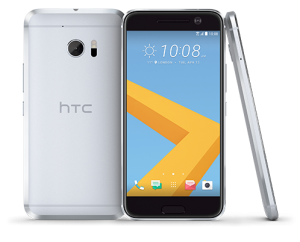 As someone who has used and enjoyed the HTC One M9, I was very pleased that I got an upgrade with the HTC 10. In case you are wondering, HTC’s newest flagship has a more simplified name, and the change is a complete redesign.
As someone who has used and enjoyed the HTC One M9, I was very pleased that I got an upgrade with the HTC 10. In case you are wondering, HTC’s newest flagship has a more simplified name, and the change is a complete redesign.
Let’s talk about a few changes that were made to the HTC 10. First of all, the charging port is not a micro USB, but the USB 3.1 Type-C. This is certainly an improvement to the speed of the charging, and it is welcome, even though all the micro USB cables that I have lying around are no longer compatible.
Speaking of charging, I am told that this is good for 2 days without a charge. Of course, I usually just charge mine whenever it goes below 50 percent. I am told that there is some new app known as HTC Boost+ that monitors app use and can dynamically allocate CPU and memory as required, and maximize the battery life. I’m also told that the Qualcomm Snapdragon 820 processor is the latest and greatest.
Also, the headphone jack, which used to be located on the bottom of the phone with the charging port, has now been moved to the top. I’m not certain why that change was made, and the only inconvenience is when I want to watch videos while charging, as there are cords in both ends of the phone when I’m using headphones.
The HTC One M9 used to brag that their speakers were on the front of the phone, and there has been an adjustment for that. There is now one Boomsound speaker on the front, and another on the side. Considering that I don’t use my phone without headphones, I don’t see this as a step backward. I’m told that the HTC 10 has been catered for audiophiles, but not being an audiophile, I can’t really testify to that.
One thing that was really great is that the power button is textured, which makes it different from the volume control buttons. These buttons are very close to each other, which has led to confusion on my part. In the past with my HTC One M9, I would attempt to turn the volume up and hit the power button. The textured feeling allows my finger to know I hit the right button before I actually push it.
The screen is an enlargement at 5.2-inches as opposed to the 5.0 that the HTC One M9 had. The resolution also has been upgraded to 1440 x 2560 with QHD resolution. Video now looks better than ever.
So, then there is a fingerprint sensor made for some extra security, and this is kind of a standard for phones now. I suppose that we are really getting to the point where we need this type of security, and this is a standard feature on most new smartphones. This one works in 0.2 seconds.
There was only one problem that I kept having is that my finger would often hit the button that allows for Android multitasking. On my HTC One M9, that button would put all apps in use on tiles. On the HTC 10, it puts the apps in use on something like a file cabinet to sift through. It’s probably part of the Marshmallow upgrade with HTC’s own Sense.
 The HTC 10 has a metal curved body, and it can get pretty hot when in use or charged up. Speaking of temperatures, I am told that this phone has been subjected to a lot of serious hot and cold weather as well as tests for bumps and scratches, along with corrosion.
The HTC 10 has a metal curved body, and it can get pretty hot when in use or charged up. Speaking of temperatures, I am told that this phone has been subjected to a lot of serious hot and cold weather as well as tests for bumps and scratches, along with corrosion.
One of the biggest things is that has been upgraded is that the SD card can hold up to 2 TB worth of excess storage. That is going to be a lot.
So, let’s talk about the camera, it has the world’s first-dual OIS, 12 Megapixel Ultra Pixel sensor, with a faster laser focus and much more. This OIS is on the front and back, and there is a larger UltraPixel sensor and a bright f/1.8 lens for up to 135 percent more light in every shot. I’ve tried out the camera, and you can see some of the results. By the way, taking photos is very easy with a lot of modes and one-button touch.
What I really like is the video, which combines with 4K video combined with the world’s first stereo 24-bit Hi-Res audio recording. All in all, I am pretty pleased with my new HTC experience. I honestly hope that these HTC Android phones will sell as good the ones from Samsung, because they are just as good.
Leave a Reply